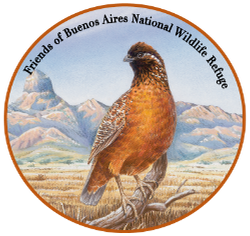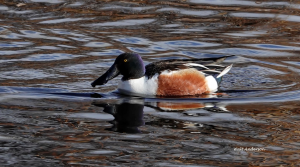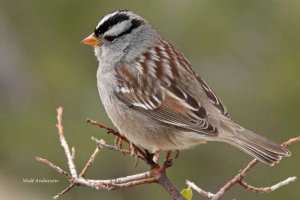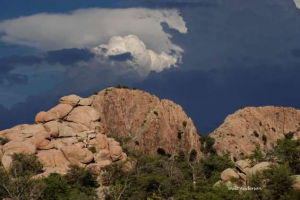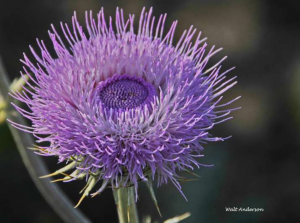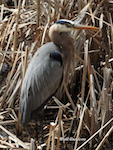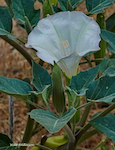Essays
Vitaceae
Two members of the Vitaceae (grape family) are widespread in Arizona riparian areas, including Arivaca Creek and Brown Canyon, and offer some of our choicest fall colors: deep red in the Woodbine (a close relative of the eastern Virginia Creeper) and yellow in Canyon Grape. Both are lianas (the proper name for a “woody vine”). Technically, vines are herbaceous, not woody (Tarzan would have had a short life if he had been swinging on vines!). Some beans, cucumbers, and squashes are good examples of vines. However, common usage says “vine” for the grape plant, and since you heard that on the grapevine, I probably cannot convert you to using “liana” for that plant.
Read MoreWhite-crowned Sparrow
Many of us look forward to the cheery songs of birds to remind us that spring is moving steadily toward summer, when most birds breed. However, here in Arizona, the arrival of White-crowned Sparrows in fall brings their melodies back to us after an absence of several months. From now until they leave in April and May, we can hear their lovely choruses, sometimes even while snow is on the ground. The songs always lift my spirits.
Read MorePersistence & Vision
Tuesday, July 13, 2021. Remember the date. Prescott, Arizona City Council voted 7-0 to approve the annexation of thousands of acres of land owned by Arizona Eco Development into the city, with the prize being 474 acres of natural open space now under city protection. This culminates a five-year process in which a few caring citizens formed a political action committee, Save the Dells, to achieve this very goal. Save the Dells garnered enormous public support, and through long, sometimes very difficult, negotiations, this date turns out to be the win-win-win successful compromise for Prescott, the people, and the developer. And let’s not forget the thousands of animals that depend on that ecosystem!
Read MoreThistles
We humans tend to generalize, so because of a few really bad actors, we often think of “thistles” as noxious weeds. Some are. I dislike dense invasive stands of Canada Thistle (a European import, not from Canada at all!) or Italian Thistle with disdain. Trying to walk through a dense stand of these imports is sheer prickly torture.
Read MoreGreat Blue Heron
As a lanky young wildlife biologist wading through a marsh on a waterfowl survey, I envied the stately grace of the Great Blue Heron. At 4’ tall with a 6’wingspan, this bird had mobility that put me in my hip boots to shame. I developed a genuine affinity for this elegant wading bird, and it is only appropriate that it is honored in this photo essay. You may have seen them at Arivaca Cienega or one of the other ponds that appears after good rains.
Read MoreAmong Friends 23 June 2021. Datura
In this ferocious drought in Arizona, when most plants are wilted or sickly with yellow leaves or hiding as seeds in the ground, it can be a surprise to see a robust, deep-green plant with large leaves poking up out of bare soil or even a crack in a rock or the sidewalk. This is certainly one of the boldest, hardiest, and most beautiful flowers during the unforgiving “arid foresummer” that we are forced to endure until life-giving monsoon rains begin.
Read MoreTitmice
by Walt Anderson Let’s face it. Most humans do not value all species equally, as honorable as that might be. We’re suckers for the cute and cuddly, critters that are boldly patterned or brightly colorful, big-eyed and not too bizarre by human standards. Giant Pandas fit those criteria, as do the charming little titmice that…
Read MoreReconnecting
By Walt Anderson It is easy to get caught up inside on a digital device or running errands around town in our own vehicular bubbles. In our busy lives, we may not be able to head to the Buenos Aires National Wildlife Refuge on a whim, no matter how rewarding that trip would be. But…
Read MoreCormorants
by Walt Anderson The featured wild neighbors this week are the two species of cormorants that occur in Arizona: Double-crested and Neotropic. The Double-crested breeds in the interior of the US and along the coasts from Mexico to Alaska. The Neotropic barely gets into the United States except in Texas and New Mexico, but that…
Read More